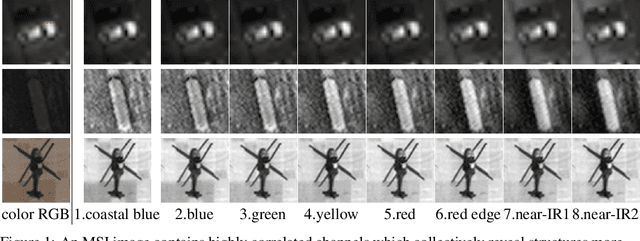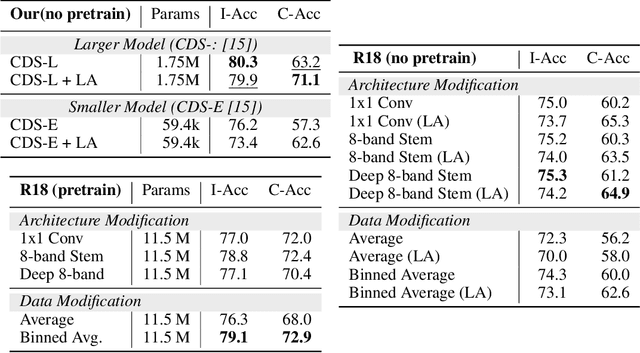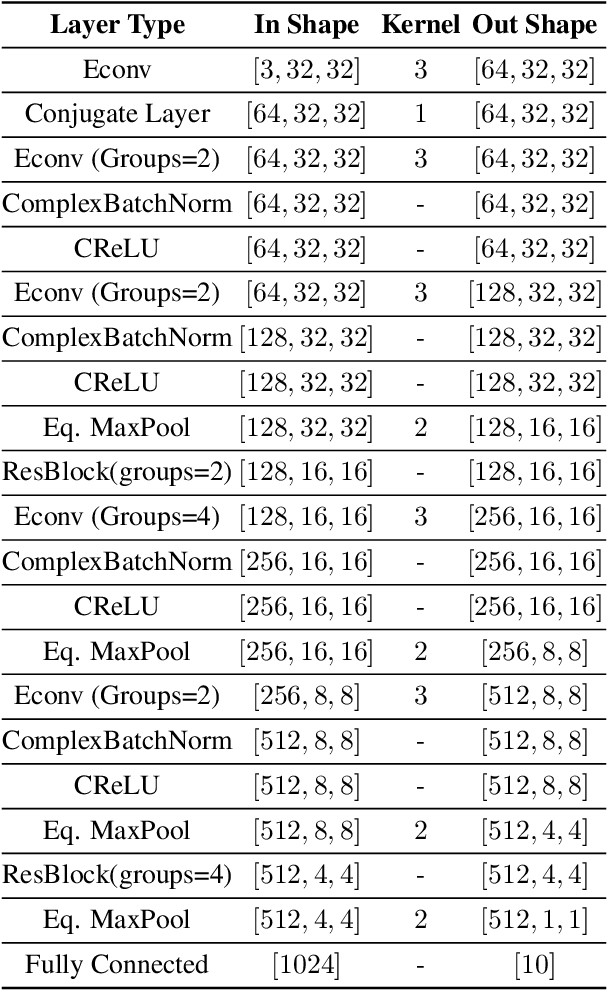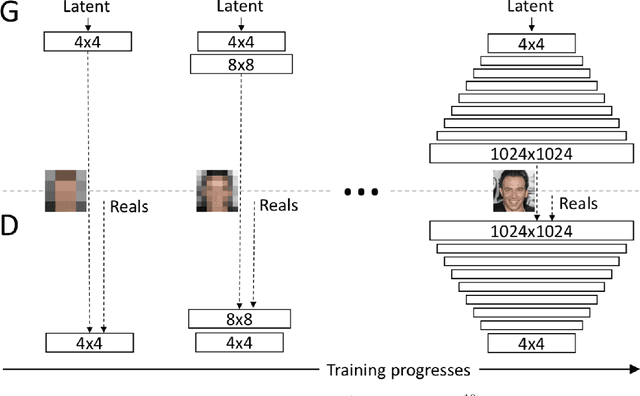Aaron A. Reite
Multi-Spectral Image Classification with Ultra-Lean Complex-Valued Models
Nov 21, 2022



Abstract:Multi-spectral imagery is invaluable for remote sensing due to different spectral signatures exhibited by materials that often appear identical in greyscale and RGB imagery. Paired with modern deep learning methods, this modality has great potential utility in a variety of remote sensing applications, such as humanitarian assistance and disaster recovery efforts. State-of-the-art deep learning methods have greatly benefited from large-scale annotations like in ImageNet, but existing MSI image datasets lack annotations at a similar scale. As an alternative to transfer learning on such data with few annotations, we apply complex-valued co-domain symmetric models to classify real-valued MSI images. Our experiments on 8-band xView data show that our ultra-lean model trained on xView from scratch without data augmentations can outperform ResNet with data augmentation and modified transfer learning on xView. Our work is the first to demonstrate the value of complex-valued deep learning on real-valued MSI data.
Conditional Generative Adversarial Networks for Data Augmentation and Adaptation in Remotely Sensed Imagery
Aug 10, 2019



Abstract:The difficulty in obtaining labeled data relevant to a given task is among the most common and well-known practical obstacles to applying deep learning techniques to new or even slightly modified domains. The data volumes required by the current generation of supervised learning algorithms typically far exceed what a human needs to learn and complete a given task. We investigate ways to expand a given labeled corpus of remote sensed imagery into a larger corpus using Generative Adversarial Networks (GANs). We then measure how these additional synthetic data affect supervised machine learning performance on an object detection task. Our data driven strategy is to train GANs to (1) generate synthetic segmentation masks and (2) generate plausible synthetic remote sensing imagery corresponding to these segmentation masks. Run sequentially, these GANs allow the generation of synthetic remote sensing imagery complete with segmentation labels. We apply this strategy to the data set from ISPRS' 2D Semantic Labeling Contest - Potsdam, with a follow on vehicle detection task. We find that in scenarios with limited training data, augmenting the available data with such synthetically generated data can improve detector performance.
 Add to Chrome
Add to Chrome Add to Firefox
Add to Firefox Add to Edge
Add to Edge